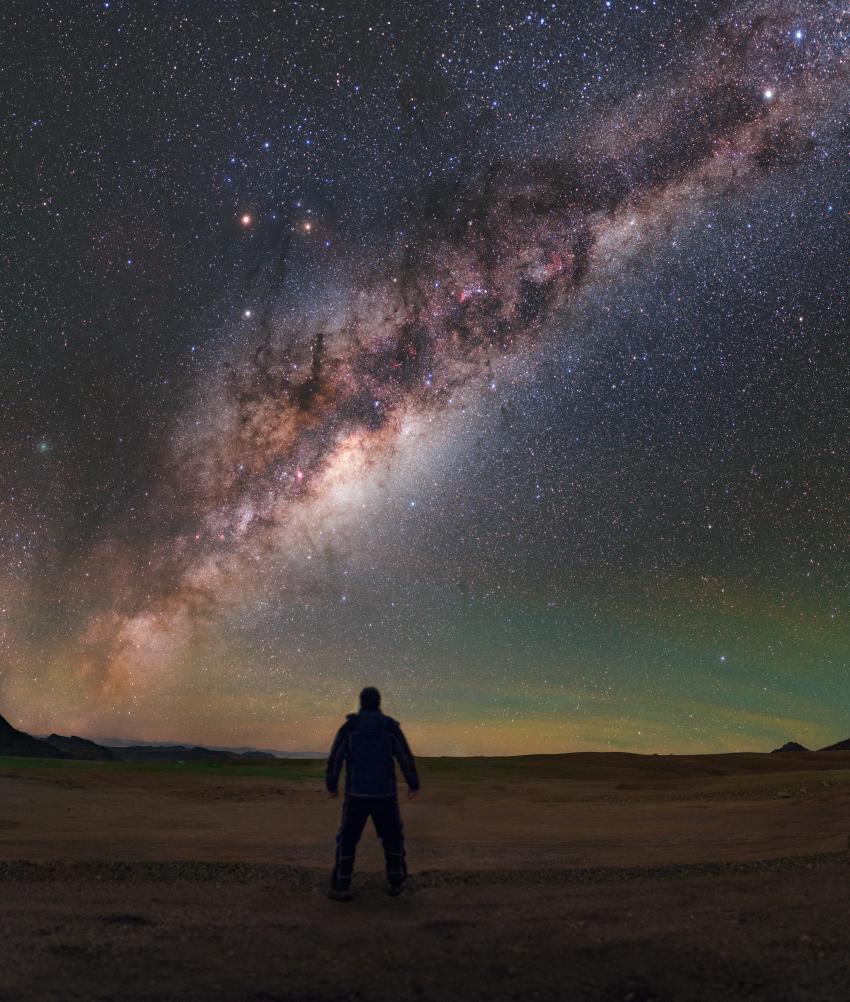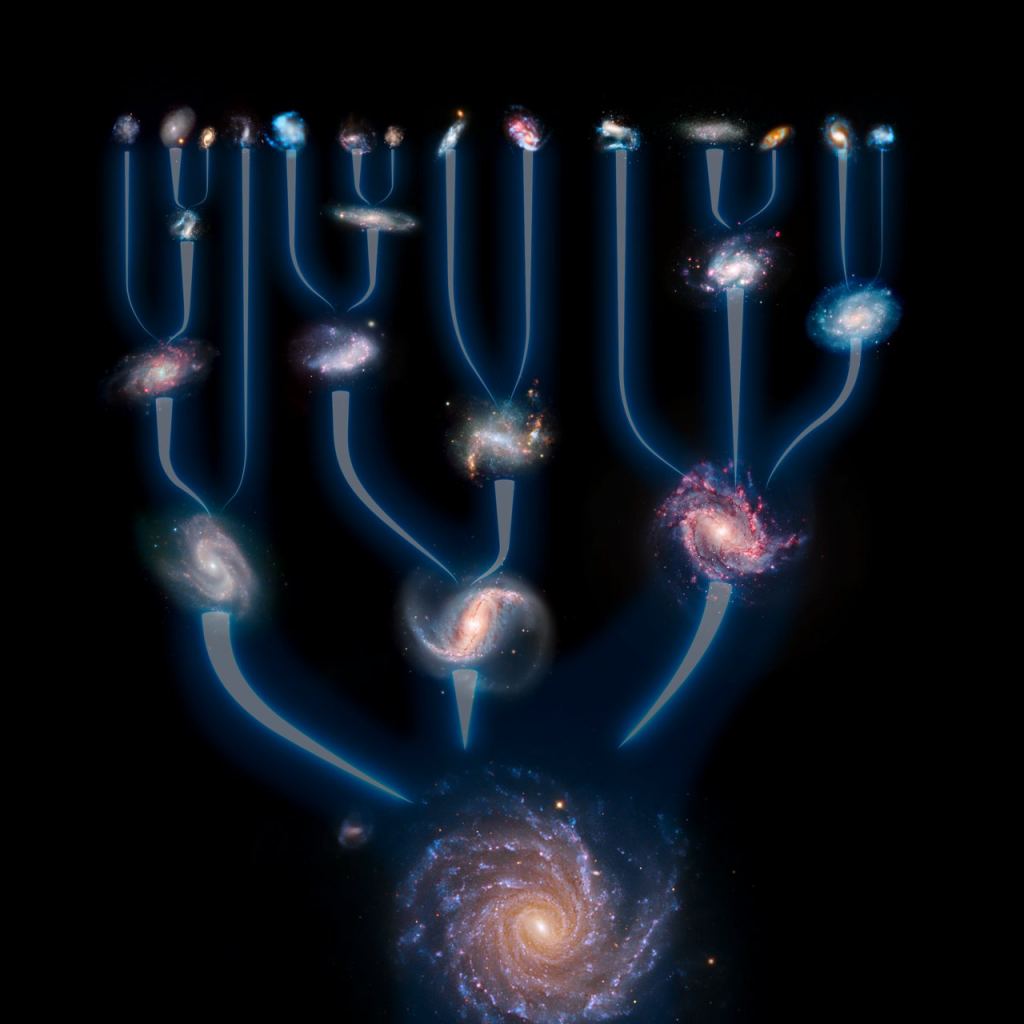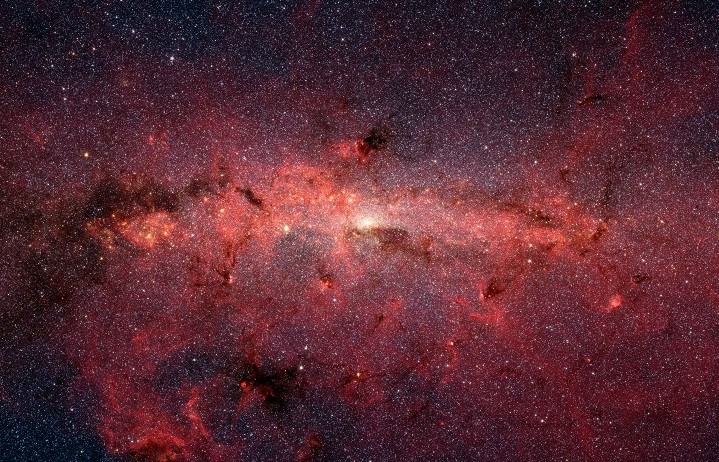The core of our Milky Way Galaxy draws astronomers’ attention like moths to a flame. That’s because there’s a lot going on there. Not only is there a supermassive black hole, but also populations of very ancient red giant stars that swarm the center. Most of them date back at least to the formation of the Galaxy.
Astronomers used the Canada-France-Hawai’i telescope in Hawaii to study a selection of these stars. They wanted to understand their characteristics and longevity. The observations are part of the “Pristine Inner Galaxy Survey (PIGS) project. It’s been studying the core of the Milky Way for several years now to understand these ancient stars.

PIGs Ancient Stars in the Core
Other studies have shown that stars began their formation in what’s now the core of the Milky Way. The PIGs stars are the remaining members of the “inner court” of the Milky Way. They spin slowly around the core and spend most of their lives there. Chemically, they’re very different from the younger stars scattered throughout the Galaxy. The oldsters are mostly hydrogen and helium, which indicates they formed at a very early epoch of cosmic history. By comparison, the younger stars in the Milky Way have higher abundances of “metals” such as carbon, oxygen, nitrogen, and so on.

Artist impression of the ancient stars in the inner region of the Milky Way. Some examples of the orbits of the stars have been highlighted on the left. The right-hand side shows the location of these stars in the Galaxy with respect to the Sun, spinning around slowly. Credit Left background image: ESA/Gaia, artist’s impression: Amanda J. Smith and Anke Arentsen, Institute of Astronomy, Cambridge. CC BY 4.0
There are many stars in the Universe itself that formed shortly after the Big Bang from the largely hydrogen- and helium-rich environment. Astronomers can use them as “templates” to study stars in our own Milky Way to determine what it was like in its infancy. Typically, such old stars exist in the core region of the Galaxy, and in the swarm of stars that make up a low-density halo around the Milky Way.
According to PIGS team member Anke Arentsen, this study seems to confirm that the survey is seeing the oldest stars in the Galaxy. “It is exciting to think that we are seeing stars that formed in the earliest phases of the Milky Way, previously largely out of reach,” Arentsen said. “These stars likely formed less than a billion years after the Big Bang, so are relics from the early Universe.
What Ancient Stars Say About the Milky Way’s History
When you look at models of galaxy formation to try and understand how the Milky Way came about, there’s a common theme: material comes together. It does it over and over again, from the protogalaxy to galaxy collisions to star formation, to planetary formation. This is what astronomers term a ” “hierarchical model.”

According to a hierarchical model of galaxy formation, small galactic building blocks formed first, only to coalesce into ever larger galaxies over the lifetime of the Universe. Stars formed early in the process. Courtesy ESO.
There are two main models about what comes next in a galaxy’s evolution. One says that the early Universe was a melange of clumps of gas and mostly dark matter. The clumps interacted gravitationally. Eventually, the non-dark-matter component (called baryonic matter) in each clump cooled and began to contract on itself. It spins and creates a proto-disk and eventually breaks apart into smaller clumps within the disk. Those clumps essentially became the first stars. Take that a step further and the infant galaxies collide with each other to form larger galaxies. This (in a nutshell) is what astronomers call the “top-down” formation theory.
Others propose that smaller gas clouds began the star formation process and those became protogalaxies. Eventually, the protogalaxies merged to form larger ones which eventually began to spin and produce disk-like structures. This is often referred to as the “bottom-up” formation theory. In both cases, the final product galaxies remained encased in dark matter halos as we see today.
Both models imply that the very oldest stars in a galaxy should be present in the dense, inner regions. This certainly seems to be true for the Milky Way. And, using spectroscopy, astronomers found that the chemical properties of those ancient stars match those of the earliest stars in the Universe.
Putting Twelve-Billion-Year-Old Stars in Perspective
So, where’s the Milky Way in the hierarchy? It began forming some 13.6 billion years ago and its original “core” was a smaller protogalaxy that became its first nucleus. For comparison, the Universe itself began in the Big Bang, which is now thought to have occurred at least 13.8 billion years ago. So, the Milky Way’s earliest stars are not quite the same age as the Universe. But, since they formed so early, they are excellent probes of what conditions were like in the earliest star-forming epochs of history.
To prove their ideas about these ancient stars, astronomers need to “see” the core of the Milky Way. It hasn’t always been easy. It’s hidden by vast clouds of gas and dust, which means that visual observations are nearly impossible. If astronomers use special filters on telescopes or look using other regimes of light (such as infrared or radio, for example), they can spot those stars pretty easily. The next step is to determine their age by looking at their light to determine their metal content. There aren’t as many of the older stars compared to their younger counterparts in other parts of the Galaxy. So, astronomers look for metal-poor stars, which are likely to be older.

This dazzling infrared image from NASA’s Spitzer Space Telescope shows hundreds of thousands of stars crowded into the swirling core of our spiral Milky Way galaxy. Credit: NASA/JPL-Caltech
What These Stars Say About the Milky Way
The PIGS observations, combined with earlier GAIA survey data, traced the motions of these stars through the Galaxy. It turns out that these older stars have more chaotic motions, but they tend to maintain an average rotation path around the core. Typically, most of the ancient stars reside inside a spherical region that reaches out about halfway between the core of the Galaxy and the Sun. However, some are found inside a low-density halo surrounding the Galaxy, where they are easier to spot. And, their age helps astronomers make some educated speculation about the Milky Way itself.
“We know they are old because of their chemical composition,” said Arentsen. “But we do not have the precise ages estimated for our stars — this is one of the most challenging things to determine, but the chemical composition is a good proxy for age. It is also difficult to estimate an age for the Milky Way itself because it formed through the build-up of smaller systems over time, and it is unclear from what moment on you call it “the Milky Way”. But almost certainly all of these stars were 𝐛𝐨𝐫𝐧 before the disk started forming in the Milky Way, and some of them will even have formed in the very first building blocks of the galaxy before they merged to “start the Milky Way”.
Next Steps
Arentsen presented results from the PIGS survey at a meeting of the Royal Astronomical Society. Prior to this presentation, she and the team have published other results from the PIGS survey, dating back several years. They also focus on the characteristics of the aging stars at the heart of the Milky Way.
How can such ancient stars still be around? Presumably, most of the very oldest ones in the Universe have long since exploded as supernovae or met some other end. In the core of a galaxy, it’s likely that a great many could be gobbled up by the growing supermassive black hole. That’s why Arentsen and the team looked specifically at red giants that are part of the second generation of stars to form after the first ones died. These ancient stars can live much longer than the very first stars did. This is particularly true if they have masses smaller than the Sun’s.
More studies of the heart of the Milky Way should uncover more about the formation, lives, and motions of these early stars. “The available data for these ancient objects is growing rapidly,” Arentsen said. “I’m excited to see what we will learn about these first stars to populate our Galaxy in the next few years!”





